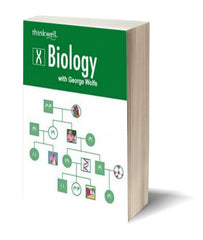12.1 Introduction to Animal Systems and Homeostasis
12.1.1 Animal Homeostasis
12.1.2 Mechanisms of Homeostasis
12.1.3 Animal Tissues: Epithelial Tissue
12.1.4 Animal Tissues: Loose Connective Tissue
12.1.5 Animal Tissues: Dense, Fluid, and Supportive Connective Tissue
12.1.6 Animal Tissue: Muscle and Nerve Tissue
12.2 The Skeletal System
12.2.1 The Structure of Bone
12.3 The Digestive System
12.3.1 Introduction to the Digestive System
12.3.2 The Beginning of Chemical Digestion
12.3.3 Chemical Digestion in the Small Intestine
12.3.4 Human Nutrition: Absorption
12.3.5 The Fate of Absorbed Nutrients
12.3.6 Egestion
12.4 Gas Exchange and Transport Systems
12.4.1 Introduction to the Gas Exchange of Animals
12.4.2 Human Gas Exchange System
12.4.3 Human Gas Exchange: The Roles of Respiratory Pigments
12.4.4 Carbon Dioxide Transport
12.4.5 Structure of the Human Heart
12.5 Circulation
12.5.1 Maintaining the Human Heartbeat
12.5.2 Human Circulation: Blood Vessels
12.6 Blood Pressure and Clotting
12.6.1 Human Circulation: Blood Pressure
12.6.2 Blood Clotting
12.7 Human Excretion
12.7.1 Human Excretion: Waste Processing
12.7.2 Human Excretion: Urinary System Structure
12.7.3 The Nephron: Blood Filtration and Urine Production
12.8 The Immune System: An Introduction
12.8.1 The Immune Response: Nonspecific Defenses
12.8.2 The Immune System: Structure and Function
12.8.3 Immunity: Clonal Selection Theory
12.8.4 Immune Response: An Overview
12.8.5 T Cells: Helper T Activation
12.8.6 T Cells: Helper and Cytotoxic T Cell Effects
12.9 The Immune System Continued
12.9.1 B Cells: The Humoral Response
12.9.2 Antibodies and DNA Rearrangement
12.9.3 Antibody Mechanisms
12.10 HIV and the Immune System
12.10.1 HIV: An Attack on the Immune System
12.11 The Endocrine System
12.11.1 Human Regulation: Endocrine Control and Signal-Transduction Pathways
12.11.2 The Endocrine System
12.11.3 Endocrine Function: Oscillations in Hormone Levels
12.12 The Ovarian and Uterine Cycles
12.12.1 The Ovarian and Uterine Cycles: Preparation for Pregnancy
12.12.2 Hormonal Events during the Female Reproductive Cycle
12.13 The Nervous System
12.13.1 The Central and Peripheral Nervous Systems and the Neuron
12.13.2 Human Regulation: Nervous System: Nerve Function and Reflexes
12.14 The Nerve Impulse
12.14.1 Human Regulation: The Nerve Impulse: General Events
12.14.2 Human Regulation: The Nervous System and the Action Potential
12.14.3 Human Regulation: Synaptic Events: Cell-Cell Communication
12.14.4 The Nervous System: A Phylogenetic Perspective
12.14.5 The Human Brain
12.14.6 Processing Centers of the Human Brain
12.15 Motor Mechanisms
12.15.1 Motor Control: Muscle Microstructure
12.15.2 The Neuromuscular Junction: The Contraction Is Triggered
12.15.3 The Sliding Filament: Interaction of ATP, Actin, Myosin, and Calcium
12.15.4 Muscle Structure and Action
12.16 Sensory Reception
12.16.1 Sensory Systems: An Introduction
12.16.2 Photoreceptors and the Vertebrate Eye
12.16.3 The Ear and Equilibrium
12.16.4 The Ear and Hearing






